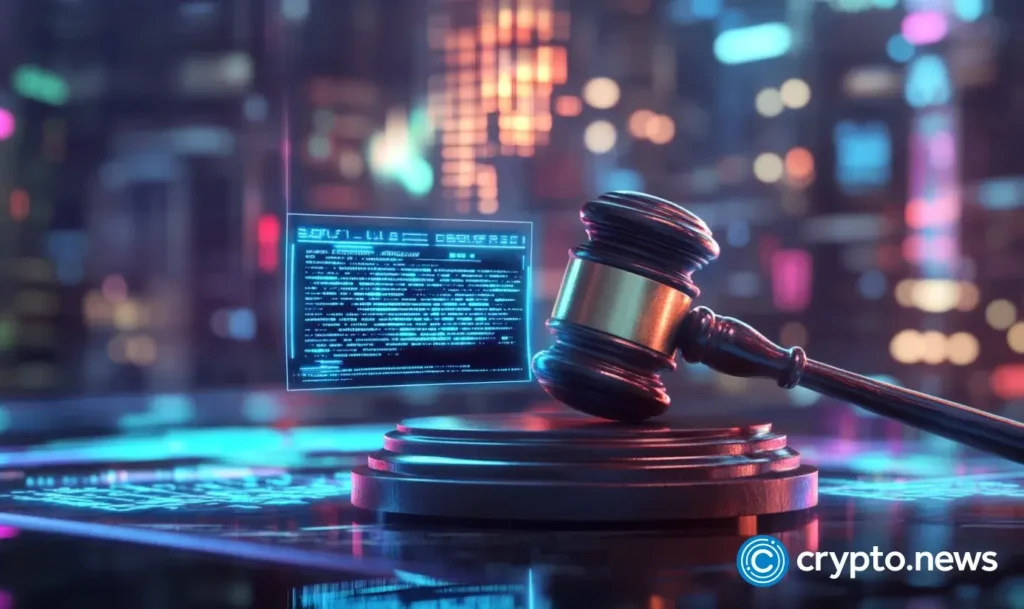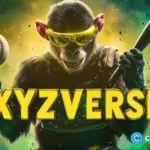Disclosure: The views and opinions expressed here belong solely to the author and do not represent the views and opinions of crypto.news’ editorial.
Innovation without imitation is a complete waste of time
Mike Rowe, Dirty Jobs
The issue of copyright and AI is white-hot right now. In the span of just a few weeks, generative AI companies have faced a wave of high-profile lawsuits, involving Anthropic and Reddit, Stability AI and Getty, as well as Midjourney and Disney. This is just the beginning.
- AI’s copyright crisis is exploding, with major lawsuits piling up as companies face backlash for training on unlicensed content scraped from the internet.
- The core problem? No reliable way to track ownership or permissions. Thus, creators are left out, unpaid, and unprotected in the AI data gold rush.
- Blockchain offers a real fix, enabling tamper-proof IP records, automated royalty payments, and verifiable rights without sacrificing privacy.
- It’s time to shift from ‘AI vs. artists’ to ‘AI with artists,’ using blockchain to build a creator economy that’s fair, transparent, and built to last.
The simultaneous emergence of these cases is no coincidence. Each of them points to a systemic flaw at the heart of the AI boom: Today’s AI models are built on vast troves of intellectual property (IP) that were never licensed or paid for.
Thus far, many AI firms have operated on a “steal now, lawyer up later” approach. Their systems scraped and mined the internet for content and value to build their machines without disclosing how they did so. While tech companies can afford protracted legal battles, the real loss is borne by individual creators. If nothing changes, we’re headed towards a future of litigation that will stifle both creativity and innovation.
Blockchain as the solution to the AI x IP problem
Every lawsuit we’re seeing comes down to the same problem: there’s no tamper-proof record of who owns what content and who gave permission to use it. Midjourney CEO Hold, whose company is actively fighting Disney in a “first of its kind” IP battle in Hollywood, defended Midjourney’s approach to gathering data in an interview with Forbes in 2022:
“It’s just a big scrape of the internet. We use the open data sets that are published and train across those,” Hold said. “There isn’t really a way to get a hundred million images and know where they’re coming from. It would be cool if images had metadata embedded in them about the copyright owner or something. But that’s not a thing; there’s not a registry.”
Hold is wrong. Blockchain can be the public registry that today’s internet lacks. Here’s how that would help solve the AI/IP dilemma:
Immutable proof of ownership
Creators can register their IP on a blockchain, creating a timestamped, unchangeable record of ownership. Each image, song, or text snippet can be hashed with its copyright info and license terms onchain. This means there’s a permanent record of who created an IP and what rights they’ve licensed out, one that no one can alter or backdate after the fact.
Decentralization and censorship-resistance
A blockchain-based registry isn’t controlled by any single company. For example, if all content licenses were stored in a database run by a big tech firm like Google or Meta, that firm could change the rules or even shut down everything overnight. A public blockchain is distributed across thousands of nodes so that no one entity can censor or change the records.
Real-time royalties via smart contracts
Blockchains can support smart contracts — self-executing agreements written in code. We can use those to ensure creators get paid automatically, in real time, when their work is used. For example, an AI training dataset could be programmed with a smart contract such that every time an AI model pulls in an artist’s image, a micro-payment is instantly sent to the artist’s wallet. No intermediaries taking a cut, no quarterly royalty statements — just automated, transparent payouts. Micropayments of fractions of a cent can accumulate across millions of training instances, finally letting creators earn income at the speed of the internet.
Built-in provenance and traceability
Because each transaction or usage can be logged onchain, provenance becomes a core feature. An image’s record would show its origin, every license or transfer of rights, and even any derivative works or AI-generated offspring that stem from it. In practice, this means an AI company could check the chain to verify it has the rights to a piece of content before including it in training. And if someone tries to use content without permission, it’s far easier to spot the mismatch.
Selective disclosure with zero-knowledge proofs
One challenge in licensing is how to verify rights without exposing the content to abuse. Zero-knowledge proofs allow a creator to prove ownership (or that they’ve licensed their work to an AI platform) without revealing the work itself. For instance, an artist could cryptographically assert, “Yes, I own artwork X and have agreed to let it be used for AI training,” and the AI platform could verify that statement via the blockchain, before actually downloading or training on the art. This way, creators don’t have to put high-resolution originals out in public just to signal their rights—they can protect their work while still providing proof of license. It’s consent and verification, with privacy preserved.
In short, blockchain can operate as the infrastructure of transparency and trust that our new AI-driven creator economy desperately needs. It’s a system built on guarantees.
Ensuring fairness in the AI era
Let’s be clear: AI itself isn’t the villain here. Being “pro-artist” doesn’t mean being “anti-AI”. In fact, many creators are excited to collaborate with AI or license their works for AI training if they’re compensated fairly.
In a world where AI can generate endless images, text, and videos at the click of a button, these super agents are both consumers and creators. With foundations in blockchain, the relationship can become a cycle that fuels creation and replication.
By embracing blockchain solutions for IP, we can flip the script from “AI vs. artists” into “AI and artists,” building together. Creators, seeing automatic royalties and clear attribution, will be far more willing to have their work contribute to AI projects. Meanwhile, AI developers get a reliable supply of high-quality training data that they know is legally clean. Nobody has to steal anything because there is a fair, enforceable marketplace for data.
The recent cascade of courtroom filings is a warning sign. AI companies must decide: licenses or lawsuits. But the future of creativity doesn’t have to be a zero-sum game. We can have a win-win scenario. The technology to do this — to track, verify, and pay for IP at scale — is already here.



